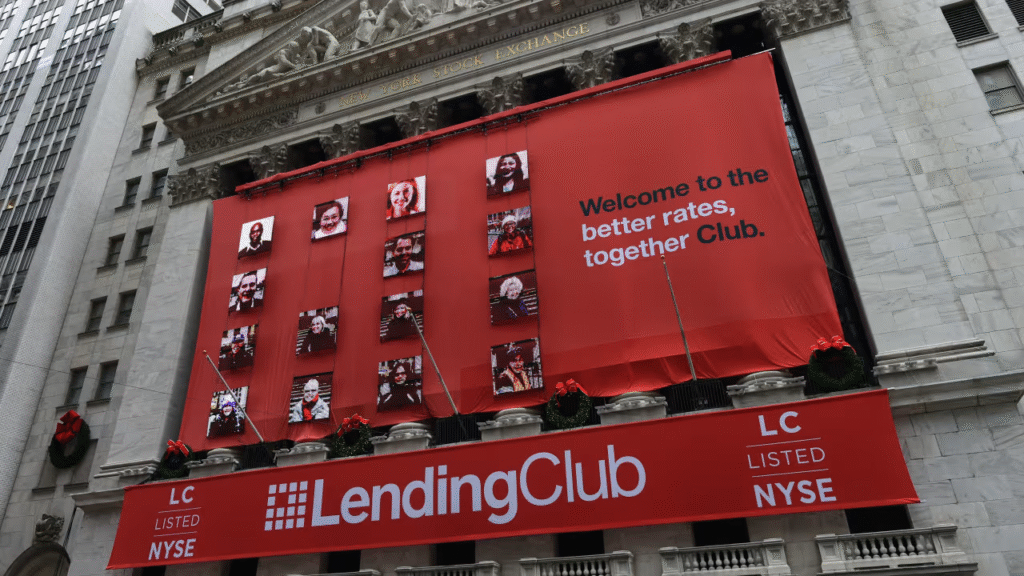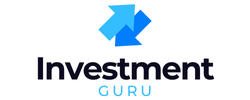Nobody brags about paying more interest than they have to. Imagine telling your friend, “Guess what? I got the highest loan rate in town!” Yeah, that’s not happening.
That’s why finding a personal loan with a low interest rate matters so much. Interest is the extra money the bank or lender charges you just for letting you borrow. The lower it is, the less you waste. Simple as that.
Whether you’re trying to pay off credit cards, cover a big expense, or just need breathing room, a loan with a low rate can save you hundreds or even thousands over time. The trick is knowing what counts as “low,” where to find it, and how to actually qualify for it.
That’s what we’re going to walk through here — without the banker jargon, and without putting you to sleep.
Table of Contents
What Is a Low-Interest Personal Loan?
A personal loan is money you borrow from a bank, credit union, or online lender. You get the money all at once, and then you pay it back in equal chunks each month until it’s gone.
A low-interest personal loan just means you’re not paying through the nose for borrowing it. The interest is the “rent” on the money. A low rate means cheaper rent. The less you give the lender, the more you keep in your pocket.
What counts as “low” depends on your credit score, income, and where you shop. For someone with excellent credit, a low rate could be around 6–8%. For average credit, low might mean closer to 10–12%. If your credit is rough, lenders may call 18% “low,” which feels a bit like calling a $20 burger a “deal.”
Bottom line: a low-interest personal loan is simply a loan that costs less than what most credit cards or higher-rate loans would charge. And if you’re borrowing thousands of dollars, even a small difference in rate can save you a mountain of money over the life of the loan.
Why Choose a Loan with a Low Interest Rate?
There’s one big reason: it saves you money. And honestly, who doesn’t like keeping more of their own cash?
Here’s why people go after low-interest loans:
1. You Pay Less Over Time
Let’s say you borrow $10,000. At a high rate, you might end up paying back $14,000. At a low rate, you might pay back closer to $11,500. That’s a vacation, a new laptop, or months of rent you don’t have to throw at the bank.
2. Easier to Manage
A loan with a lower rate usually comes with a steady, predictable payment. You know exactly how much to set aside each month. No surprises, no “why is my bill bigger this time?” drama.
3. Debt Disappears Faster
When less of your payment is eaten up by interest, more of it goes toward the balance. That means you knock out the debt sooner. It’s like scooping water out of a sinking boat with a bucket instead of a spoon.
4. Peace of Mind
Knowing you got a fair deal helps you sleep better. Nobody lies awake at night thinking, “I wish my lender charged me more interest.”
Where to Find Personal Loans with Low Interest Rates
Hunting for a low-interest personal loan should not feel like hunting for a wooly mammoth. You don’t need to do anything extra special or be in a specific category of people. You just need to know where to look and how to apply the right way. Here are the main places people go:
1. Banks

Examples: Wells Fargo, Citi, Discover, U.S. Bank.
- Why try a bank? If you already have an account there, they might give you a better rate because they know your history. Banks are also familiar and (usually) trustworthy.
- How to apply (step by step):
- Log in to your online banking or visit a branch.
- Look for “Personal Loans” under lending products.
- Fill in how much you want to borrow and for how long.
- Provide documents like proof of income, ID, and sometimes tax returns.
- Wait for approval — it may take a few days (banks aren’t always fast).
Tip: Banks can be strict. If your credit score is low, don’t be shocked if they say no or give you a higher rate than you hoped.
2. Credit Unions
Examples: Navy Federal Credit Union, PenFed, Alliant Credit Union.
- Why try a credit union? They’re member-owned, so they often give lower rates than big banks. Think of them as the friendly cousin of banks — a bit smaller, sometimes more helpful.
- How to apply (step by step):
- Join the credit union (many are open to anyone in your area or through a small donation).
- Once you’re a member, ask about personal loan options.
- Fill out the loan application (online or in person).
- Show your ID, proof of income, and credit history.
- Get approved, and the funds usually land in your account within a few days.
Tip: Credit unions may feel “old-school,” but don’t sleep on them. Their interest rates often beat the flashy ads from online lenders.
3. Online Lenders

Examples: SoFi, LightStream, Marcus by Goldman Sachs, LendingClub, Upgrade, Best Egg, Upstart.
- Why try online lenders? They move fast, everything is digital, and you can compare offers without leaving your couch. Some even give same-week funding.
- How to apply (step by step):
- Go to the lender’s website.
- Enter basic info: name, address, income, and how much you want to borrow.
- Get a pre-approval offer (this is usually a soft credit check, so it won’t hurt your score).
- Compare the rate, loan term, and monthly payment.
- If you like it, submit the full application with supporting documents (pay stubs, ID, maybe bank statements).
- Get funds sent straight to your bank account — sometimes in just a couple of days.
Tip: Online lenders are like dating apps — there are lots of choices. Don’t just say “yes” to the first one. Compare a few before you commit.
4. Loan Marketplaces
Examples: LendingTree, NerdWallet, Credible.
- Why try marketplaces? Instead of applying to 10 lenders one by one, you fill out one form and see multiple offers. It’s like window shopping, but for money.
- How to apply (step by step):
- Go to the marketplace website.
- Fill out a single application with your info.
- The site shows you a list of lenders, rates, and terms.
- Click the one you like best, then finish the application directly with that lender.
- If approved, the loan is funded by the lender, not the marketplace.
Tip: These sites are great for comparing, but don’t get dazzled by “as low as” rates in big fonts. Those are the best-case numbers — your actual rate depends on your credit and income.
How to Qualify for the Lowest Rates
Low interest rates don’t fall from the sky. Lenders give them to people who look “safe” to lend money to. Here’s what makes you look good in their eyes:
1. Keep Your Credit Score Healthy
The higher your score, the lower your rate. To lenders, a high credit score says, “This person pays bills on time and doesn’t live on impulse purchases.”
- Pay bills before the due date.
- Don’t max out credit cards.
- Check your credit report for mistakes.
Tip: Think of your credit score like a reputation. If it’s bad, people (and banks) hesitate to trust you. If it’s good, doors open faster.
2. Show Solid Income
Lenders want to see steady money coming in. They’ll ask for pay stubs, tax returns, or bank statements. If your income covers your bills with room to spare, they’ll be more likely to give you a lower rate.
Tip: Banks love boring paychecks. If you’ve got steady income, you look like less of a gamble.
3. Watch Your Debt-to-Income Ratio
This is just a fancy way of saying: how much of your paycheck already goes to debt? If most of your money is already tied up paying other loans, lenders get nervous. A lower ratio = better chance at low rates.
Tip: If your paycheck comes in and runs out the door before you even see it, lenders notice.
4. Pick a Shorter Loan Term
Shorter loan = lower risk for lenders. That often means a lower rate. The monthly payment might be higher, but you’ll pay less interest overall.
Tip: It’s like ripping off a bandage fast instead of peeling it slowly. Hurts a little more each month, but done quicker and cheaper.
5. Be an Existing Customer
Some banks and credit unions give discounts to people who already have an account there. Loyalty can actually pay off here.
Tip: It’s like the bank saying, “Fine, you’ve been with us for years. We’ll cut you a break.”
Step-by-Step: How to Get a Low-Interest Personal Loan
Getting a low-interest loan isn’t rocket science, but it does take a little prep. Here’s the game plan:
Step 1: Check Your Credit
Before you even look at loans, peek at your credit score. This number decides what kind of rates lenders will offer. If it’s strong, you’re in the “good deals” club. If it’s shaky, you may want to clean it up first.
Tip: Don’t skip this. Walking into a loan without knowing your score is like shopping without checking your wallet.
Step 2: Compare Lenders
Don’t grab the first loan that flashes across your screen. Look at banks, credit unions, and online lenders. A half-hour of comparing can save you thousands.
Tip: Treat it like buying sneakers. You wouldn’t buy the first pair you see if you know another store sells them cheaper.
Step 3: Get Pre-Approved
Most lenders let you see a loan estimate without hurting your credit. This is called pre-approval. It shows you the rate, monthly payment, and term you might get.
Tip: Think of it like test-driving a car. You get a feel for it without signing the papers yet.
Step 4: Read the Fine Print
Before you accept anything, check for fees. Some lenders charge origination fees (basically a cover charge for borrowing money). Others charge if you pay the loan off early.
Tip: If a loan offer looks too good to be true, the sneaky fee section usually explains why.
Step 5: Apply for the Loan
When you’ve found “the one,” it’s time to apply. You’ll need ID, proof of income, and sometimes tax returns or bank statements. Submit it online or in person.
Tip: Be ready for a hard credit check here. Your score might dip a few points, but it’s normal.
Step 6: Use the Loan Wisely
Once the money lands in your account, don’t let it burn a hole in your pocket. Use it for the reason you got it — paying off debt, covering a big expense, or whatever goal you set.
Tip: That money isn’t “fun money.” Treating it like bonus cash is how people end up in deeper debt.
Pros and Cons of Chasing the Lowest Rate
Going after the lowest loan rate sounds like a no-brainer. Who wouldn’t want to pay less? But, like everything else in life (cheap sushi, free Wi-Fi, “as seen on TV” gadgets), there are ups and downs.
Pros
You Save Money
Less interest means more cash stays in your pocket. Simple math: borrow $10,000 at 7% and you’ll pay back way less than at 18%. That’s the difference between buying groceries for months or giving your lender a vacation fund.
Predictable Payments
Low-rate loans usually come with fixed monthly payments. You know what’s due each month, no nasty surprises.
Debt-Free Sooner
When more of your money goes toward the balance instead of interest, you finish faster. It’s like running downhill instead of uphill.
Less Stress
Knowing you scored a good deal feels good. You won’t sit there wondering, “Did I just get ripped off?”
Cons
Not Everyone Qualifies
Lenders save their best rates for people with strong credit. If your credit score looks like it went through a blender, you may not get the low numbers you see in ads.
Shorter Terms = Higher Payments
Many of the lowest rates come with shorter loan terms. The monthly bill might be bigger, which can squeeze your budget.
Sneaky Fees Can Cancel the Savings
Origination fees, late fees, or prepayment penalties can eat away the benefit of that shiny low rate. Always check the fine print.
The Chase Can Waste Time
If you spend months hunting for the “perfect” loan, your debt is still sitting there, growing. Sometimes “very good” is better than “perfect but never found.”
Other Ways to Borrow at a Low Rate (If Personal Loan Isn’t It)
Personal loans are solid, but they’re not the only way to borrow money without getting hammered by interest. Here are a few other paths people take:
1. Balance Transfer Credit Cards
These cards let you move debt from a high-interest card onto a new card with 0% interest for a set period (usually 12–18 months).
- Good for: People who can pay off their debt quickly during the promo period.
- Watch out: Once the promo ends, the rate can jump back up faster than your heart rate after coffee.
2. Home Equity Loan or HELOC
If you own a home, you can borrow against your equity. Rates are often lower than personal loans because your house is the collateral.
- Good for: Big expenses or debt consolidation.
- Watch out: If you don’t pay, the bank can come for your house. That’s not the kind of motivation anyone wants.
3. Credit Union Special Loans
Many credit unions offer “debt consolidation loans” or special low-rate personal loans just for members.
- Good for: People who want friendly terms and smaller payments.
- Watch out: You usually have to join the credit union first, which sometimes means filling out extra forms or paying a small membership fee.
4. Borrowing from Family or Friends
It’s not always the first choice, but sometimes borrowing from people you know can mean zero interest.
- Good for: When you need a quick, cheap solution and trust is strong.
- Watch out: If you don’t pay them back, you won’t just hurt your credit score — you might lose your Thanksgiving invite too.
Real-Life Example (Case Study)
Let’s use a simple story.
Maria needs $10,000 to wipe out her credit card balances. She checks two loan offers:
- Loan #1: Interest is 18%. The payment is about $250 a month for 5 years. By the time she’s done, she’s given the lender over $15,000. That’s $5,000 in extra charges — money she’ll never see again.
- Loan #2: Interest is 7%. The payment is closer to $200 a month for 5 years. By the end, she pays back around $11,800.
Here’s the difference: with the lower rate, Maria keeps more than $3,000 in her own pocket. That’s money for bills, groceries, or even a family trip — instead of a gift to the bank’s bonus pool.
Plain truth: The loan amount didn’t change. Only the rate did. That’s why chasing a lower interest rate actually matters.
Final Take
A personal loan with a low interest rate isn’t fancy or complicated. It’s just a smarter way to borrow. The loan itself doesn’t change — you still owe the same dollars — but the rate decides how much extra you hand over to the lender. Lower rate, less waste.
The trick is simple: check your credit, compare offers, and don’t rush into the first deal that pops up on your screen. Even a few percentage points can mean thousands saved over the life of a loan.
Think of it like buying gas. One station charges $6 a gallon, the other charges $3. Both fill your tank the same way — but only one leaves you enough money for snacks.
So if you’re going to borrow, do it wisely. Chase the lowest interest rate you can qualify for, read the fine print, and use the loan for what you planned. Done right, it’s one of the easiest ways to save yourself a pile of money without working any harder.
FAQs: Personal Loans with Low Interest Rates
1. What is considered a low interest rate for a personal loan?
It depends on your credit. With great credit, you might see rates around 6–8%. With average credit, “low” could be closer to 10–12%. Anything under your credit card’s 20%+ is already a win.
2. Where’s the best place to get a low-rate loan?
Banks, credit unions, and online lenders all offer them. Credit unions often give the friendliest rates. Online lenders move faster. Banks are familiar if you already have an account there. It’s less about the logo and more about who gives you the best number.
3. How do I actually qualify for a low rate?
Lenders like people who look safe. That means a solid credit score, steady income, and not drowning in other debt. Think of it like being picked first in gym class — the coach wants the players who look dependable.
4. Is a longer loan term better for a low rate?
Not really. Longer loans usually mean higher rates and more interest over time. Shorter loans often have lower rates, but the monthly payment is higher. Pick the balance your budget can handle.
5. Can fees ruin the benefit of a low rate?
Yes. Origination fees, late fees, or prepayment penalties can eat into your savings. Always read the terms so you don’t get blindsided.
6. What’s the biggest mistake people make when borrowing?
They celebrate too soon. They get the loan, pay off their cards, and then… swipe those cards again. That’s how you end up with double the debt. The loan should be the finish line, not the restart button.


